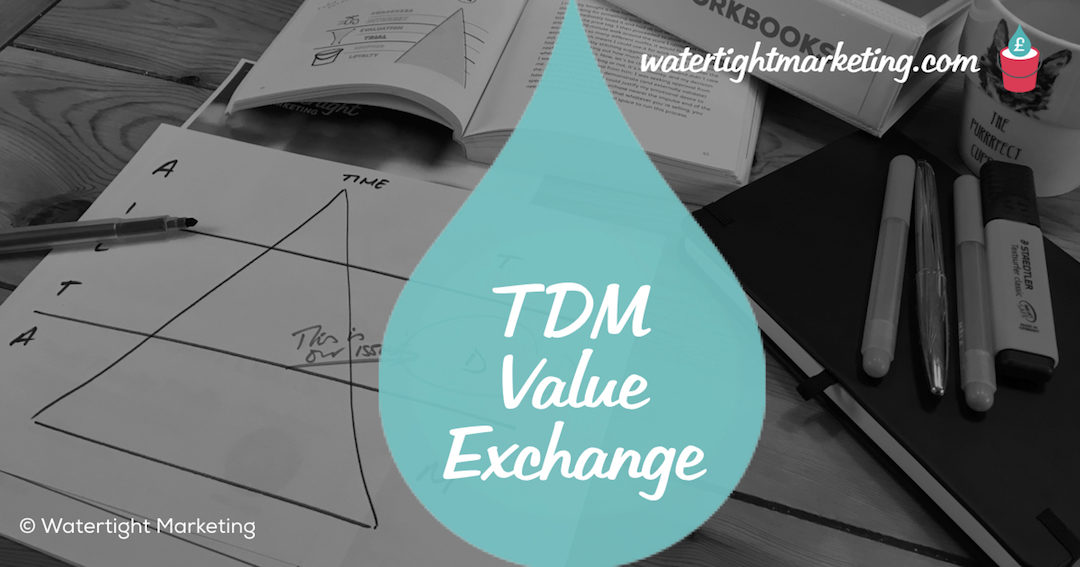I’m not talking about PayPal or invoices here, I’m talking about what people exchange with you in return for value at different stages of a buying decision. If you can crack this, your marketing will almost always deliver for you.
As someone goes through an important buying decision they will incrementally build up their relationship with whomever they eventually choose to buy from. If you’re able to map your marketing to the way that people do this, you’ll draw many more people all the way through the process.
So many businesses use Return on Investment (ROI) as the key metric on which to judge the success of marketing. But, people pay you in more ways than just money. In fact, they pay you in three different ways at different stages of a buying decision. For long-term sales results, you need to focus your marketing at gaining the right exchange, in the right order.
Buyers can pay you with their time, their data and their money
At the early stages in a buying decision a potential buyer will exchange their precious time in return for something of value from you. If you deliver on this, the next step up in exchange is to increase the time they give you and add in data, for example their email address. If you continue to deliver value in this exchange, they will add in more time, more data and add in money.
You want to structure a path to purchase that builds up this value exchange. For example:
- To gain a person’s time: Useful articles, how-to videos, tips, etc. Freely available with no data lock.
- To gain a person’s data: A ‘lead magnet’ behind a data lock, for example a paper, video course, webinar, etc.
- To gain a person’s payment: A carefully crafted Gateway Product that makes the transition into payment pain-free.
Putting key metrics in place that measure these exchanges, and the flow between them, will give you a much clearer picture of whether your marketing is working for you.
Do you provide good value for time?
The lynchpin concept to making this work is to provide phenomenal value for time. If you do that, the likelihood of moving onto the other forms of exchange (data and money), significantly increases.
Asking yourself whether you’re offering value for time will always drive up the quality of your marketing materials.
Sit through what you want potential buyers to sit through and simply ask yourself if they’d consider it time well spent. Doing this quickly weeds out the ‘me-me-me’ sales bumf that so often masquerades as marketing content. Seriously, what value does it give them to know how many awards you’ve won, or the detailed design spec of your widgets? Content that consistently provides value for time is content that is helpful.
In fact, if you focus wholeheartedly on value for time, the other exchanges take care of themselves. If the buyer sees the value they’ll be willing to give you permission to email them. And, at some point it becomes so valuable that they are willing to pay for it.
‘Earning the right to time’ is a key concept in Watertight Marketing, covered in Chapter 4.
© Bryony Thomas – The Watertight Marketer

Bryony Thomas
Author & Founder, Watertight Marketing
Bryony Thomas is the creator of the multi-award winning Watertight Marketing methodology, captured in her best-selling book of the same name. She is one of the UK's foremost marketing thinkers, featured by the likes of Forbes, The Guardian, Business Insider and many more, and in-demand speaker for business conferences, in-house sales days and high-level Board strategy days.



I do like this separation of readers paying attention from paying money – it focusses us on what we have to do in our marketing.
I’m a proud owner of your first edition.
🙂 Dave
Thanks Dave. It’s a framework that’s expanded in the second edition, as I kept drawing it! Glad you enjoyed the first one 🙂